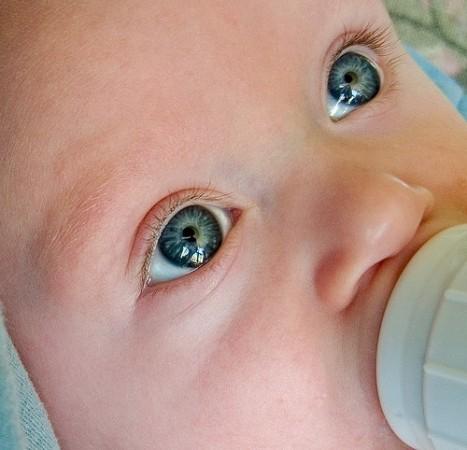
A simple eye observation test conducted in infancy can help doctors detect autism early, a new study said.
Researchers said that early signs of the developmental disorder can be identified by just watching the baby's eye contact exhibited during the early stages of growth. According to them, autistic children first display difficulties in keeping continuous eye contact with peoples' eyes around the age of two months.
Autism spectrum disorder (ASD) or simply autism is a term used to characterise a group of disorders that affect the normal development of the brain. The developmental disorder starts by age three and leads to significant social, communication and behavioural changes. Difficulties in social interaction, verbal and non-verbal communication, or rigid-repetitive behaviours, are very common among autistic children. Till now, there is no medical or blood test available for an early diagnosis of the condition. The behaviour and development of a child are some factors used by health practitioners to determine the disorder.
The current findings are based on one of the common features found in children diagnosed with autism. Babies normally start observing and focusing on human faces, shortly after birth. However, these features are not present in autistic children and they do not make any eye contact.
For the study, researchers monitored 110 newborns and followed their developments until they turned three years old. Babies with a family history of autism (older sibling diagnosed with autism) were noted down and formed to a separate group.
During the experiment, researchers played video clips of a caregiver to the children. With the help of eye-tracking equipment, they measured and recorded eye movements and contact each child displayed while watching the video clips. It included the time the child spent looking at the caregiver's different parts of the body and other objects shown on the video. The test was repeated at 10 different stages of growth between two months and two years.
The children were tested for autism around age three. Researchers then found that children diagnosed with autism carry a common feature from the beginning - lack of eye contact. "In infants later diagnosed with autism, we see a steady decline in how much they look at mom's eyes," Dr Warren Jones, who was involved in the study, said in a statement.
An early diagnosis of the disorder helps in better treatment. So the findings bring some hopes in parents and children affected with the disorder. "This insight, the preservation of some early eye-looking, is important," Jones said adding, "In the future, if we were able to use similar technologies to identify early signs of social disability, we could then consider interventions to build on that early eye-looking and help reduce some of the associated disabilities that often accompany autism."








